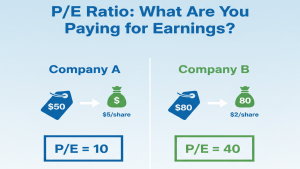Summary (TL;DR)
Dollar-Cost Averaging (DCA) is the disciplined strategy of investing a fixed amount of money at regular intervals, for example, $100 every month regardless of whether the market is up or down. This approach helps reduce the impact of volatility, averages out your purchase price over time, and removes the perilous temptation to guess the market’s next move.
Introduction
Many who approach the grand theater of the market believe the key to success is timing a dramatic entry at the absolute bottom and a swift exit at the peak. This is the path of the speculator, a stressful and often fruitless endeavor akin to catching lightning in a bottle. There is, however, a wiser, more serene path. It is a strategy built not on prediction, but on persistence. It does not require a crystal ball, only a calendar and conviction. This is the path of Dollar-Cost Averaging, a powerful technique that transforms market volatility from an adversary into an ally.
A Look Back in Time
While the principle of incremental buying is as old as commerce itself, it was popularized for the modern investor by the legendary Benjamin Graham, the father of value investing, in his seminal 1949 work, The Intelligent Investor. Graham saw that the average person lacked the time and temperament to be a full-time market analyst. He needed a simple, logical system to build wealth without becoming consumed by the market’s manic-depressive swings. DCA was his elegant solution a way to enforce buying discipline and ensure that one is investing consistently, methodically, and unemotionally.
The Core Concept (Explained with Analogy)
Imagine you are a baker who needs a steady supply of flour for your bakery. You know the price of flour changes daily due to weather, harvests, and demand.
You could try to outsmart the market. You might save all your money and wait for the one day you believe flour will be cheapest, then buy all you need for the year in one go—a lump-sum investment. If you guess right, you are a genius. But if you guess wrong and buy right before prices tumble, you’ve locked in a high cost for the entire year, hurting your profits.
Now, consider the Dollar-Cost Averaging approach. Instead of guessing, you commit to buying $100 worth of flour every single Monday.
- On some Mondays, the price is high, and your $100 gets you only a small sack of flour.
- On other Mondays, there’s a surplus, prices are low, and that same $100 buys you a very large sack.
Over the course of the year, you have bought flour at many different prices. You never bought all your flour at the absolute lowest price, but you certainly avoided buying it all at the peak. You smoothed out the price fluctuations and ended up with a fair average cost per pound. You ignored the daily noise and focused on your long-term goal: keeping the bakery stocked. This is the essence of DCA a rhythmic, steady accumulation that prioritizes consistency over clairvoyance.
A Real-World Connection
The 2008 Global Financial Crisis provides a powerful testament to this strategy. As markets plunged, panic was rampant. Investors who tried to “time the bottom” often failed, either buying too early and suffering further losses or waiting too long and missing the recovery. However, an investor who was automatically contributing to their 401(k) or another investment account was practicing DCA. Every two weeks, their contribution bought more and more shares of battered-down funds. When the market eventually began its historic recovery, that investor was holding a large number of shares purchased at bargain prices, and their portfolio recovered far more powerfully than someone who had sold in a panic.
From Theory to Practice
Investors use Dollar-Cost Averaging to answer the paralyzing question: “When should I invest?” With DCA, the answer is simply “On a regular, predetermined schedule.”
- Automation: It is most often implemented through automatic contributions to retirement accounts like a 401(k) or IRA, or by setting up recurring investments into a mutual fund or ETF.
- Emotional Shield: Its primary benefit is psychological. By making investing automatic, it removes fear and greed from the equation. You are less tempted to stop investing when markets are scary (which is often the best time to buy) or to pile in recklessly when markets are euphoric.
- Building Large Positions: It allows an investor to gradually build a significant position in an asset without needing a large sum of capital upfront and without risking investing it all at an unfavorable price.
A Brief Illustration
Let’s follow two investors, Lump-Sum Larry and Steady Sarah. They each have $400 to invest in a fund over four months.
The price of a share in the fund changes each month:
- Month 1: $10/share
- Month 2: $5/share (Market drops)
- Month 3: $8/share
- Month 4: $10/share (Market recovers)
Lump-Sum Larry invests his entire $400 in Month 1.
- He buys 40 shares ($400 / $10 per share). His average cost is $10 per share.
Steady Sarah uses DCA, investing $100 each month.
- Month 1: $100 buys 10 shares (at $10/share).
- Month 2: $100 buys 20 shares (at $5/share).
- Month 3: $100 buys 12.5 shares (at $8/share).
- Month 4: $100 buys 10 shares (at $10/share).
After four months, Sarah has invested her $400 and owns a total of 52.5 shares. Her average cost is $7.62 per share ($400 invested / 52.5 shares). By investing through the downturn, she acquired more shares when they were cheap, resulting in a lower average cost than Larry.
The Chapter’s Wisdom (Key Takeaways)
- DCA is a strategy of discipline, not prediction. It involves investing a fixed sum of money at regular intervals.
- It reduces the risk of investing a large amount at a market peak.
- By buying more shares when prices are low and fewer when they are high, you can achieve a lower average cost per share over time.
- Its greatest strength is in removing emotion from investment decisions, fostering a consistent, long-term habit of wealth building.
Chapter Glossary
- Dollar-Cost Averaging (DCA): The practice of investing a fixed sum of money at regular intervals, regardless of the asset’s price.
- Volatility: The statistical measure of the dispersion of returns for a given security or market index; in simple terms, how much the price swings up and down.
- Lump-Sum Investing: The strategy of investing a significant amount of capital into a security or portfolio all at once.
- Market Timing: The act of attempting to predict future market movements to buy assets at a low price and sell them at a high price.
Food for Thought (Engagement Prompt)
- While DCA is great for reducing risk, can you think of a market scenario where a lump-sum investment at the very beginning would have performed significantly better?
- How might automating your investments change your emotional reaction during a market crash compared to manually deciding to invest each month?
Additional Topics to Explore
- Understanding Support and Resistance: The Market’s Memory: Understanding Support and Resistance.
- The January Effect: A theory that suggests stock prices tend to rise more in January than in other months.
- The September Effect: A contrasting anomaly where September has historically been the worst-performing month for stocks.
Disclaimer: This article is for informational purposes only and does not constitute financial, investment, or legal advice. The information provided is a synthesis of publicly available data and expert analysis and should not be considered a recommendation to buy or sell any security. Investing in the stock market involves risk, including the possible loss of principal. Past performance is not indicative of future results. Readers should consult with a qualified financial advisor to determine an investment strategy that is suitable for their own personal financial situation and risk tolerance.






















